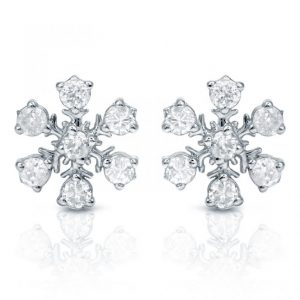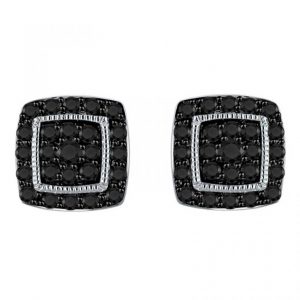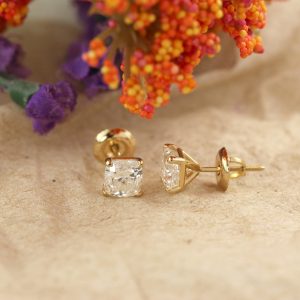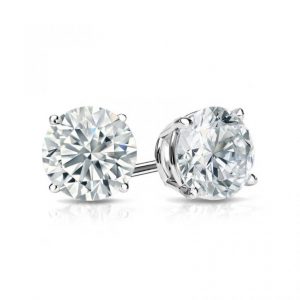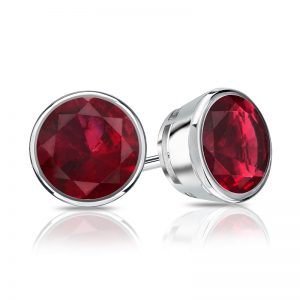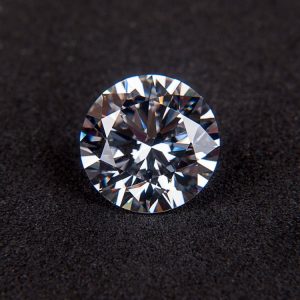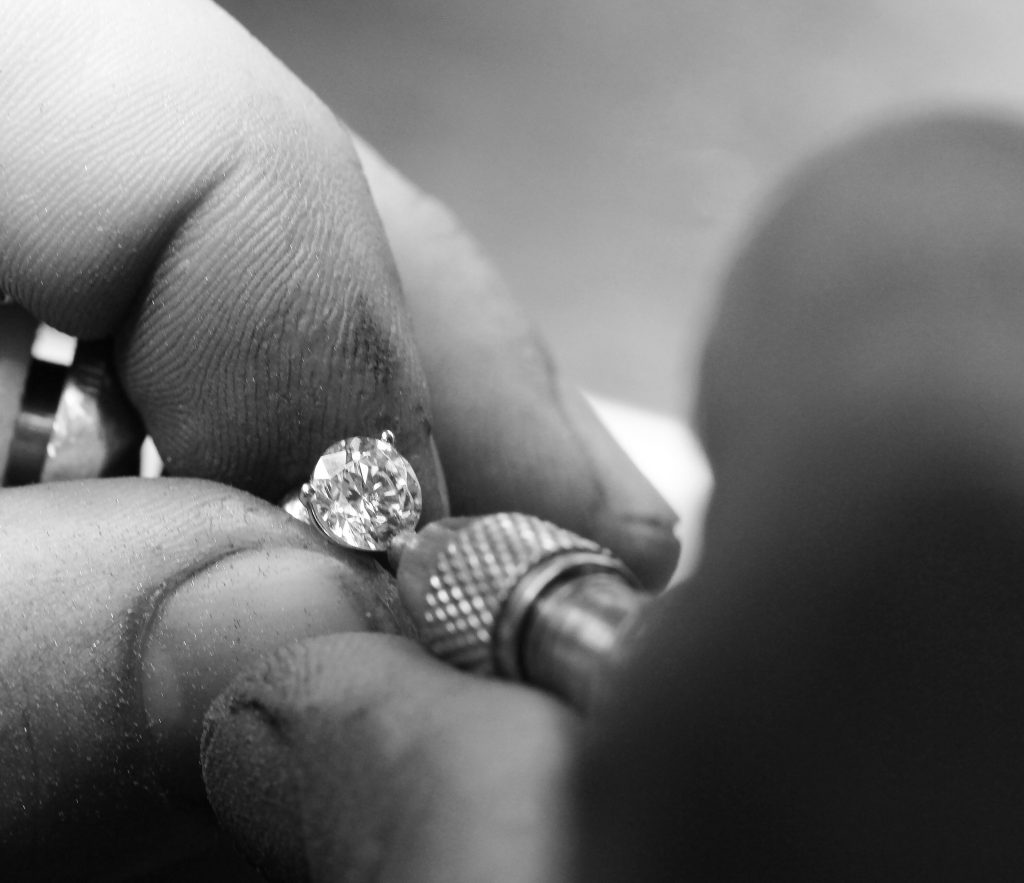
You’ve probably heard of the 4Cs of diamonds: diamond cut, color, clarity, and carat weight. These four diamond qualities have a large impact on the quality and beauty of a diamond. And, therefore, they also have a large impact on a diamond’s price. But the Four Cs aren’t the only diamond qualities that can have a big impact on a diamond’s quality, beauty, and price. There are a few other factors that can affect a diamond’s beauty and value and, in this post, we wanted to take a closer look at two of them: symmetry and polish.
Symmetry and polish are qualities that affect a diamond’s cut grade, the grade a diamond is given based on how well it was cut. Though, the Gemological Institute of America (GIA) and other gemological laboratories also give diamonds individual symmetry grades and polish grades. So how do symmetry and polish affect a diamond’s beauty and value? And what do you need to know about symmetry and polish before buying a diamond? Read on to learn about the finer details of selecting a diamond with this guide to the top 5 symmetry and polish facts.
1. The Definition of Diamond Symmetry
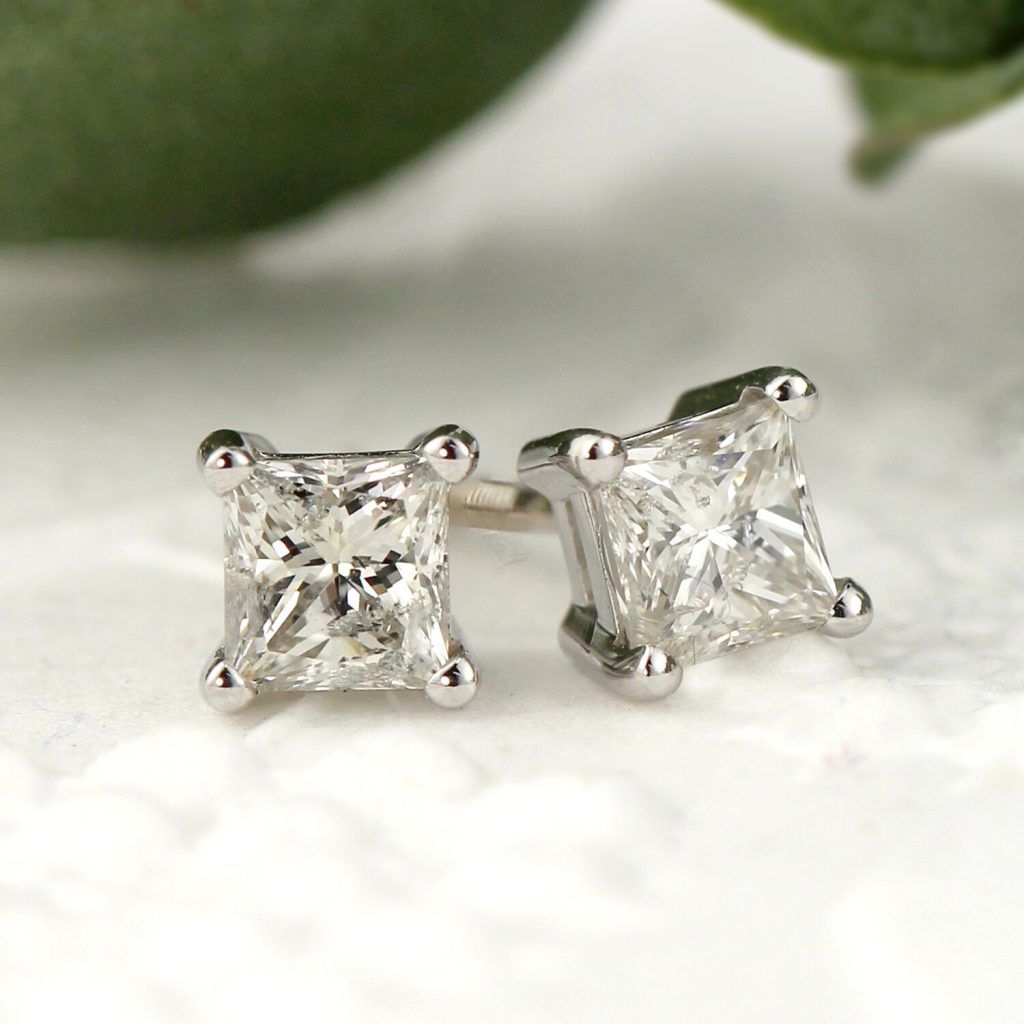
This evenly cut and faceted pair of 1 total carat weight princess cut studs shows lovely diamond symmetry.
First, let’s talk about the definition of diamond symmetry. Diamond symmetry is a grading of how symmetrical a diamond’s cut is. Many things can impact a diamond’s symmetry, such as its facets, its crown angles, its crown height, the location of its culet, and its pavilion angles. To receive the highest grade for symmetry, diamonds and gemstones must have the correct number of facets and feature virtually no symmetry variations.
So why is diamond symmetry important? How does it affect the beauty and value of a diamond? Diamond symmetry is important for a diamond’s beauty and value for two reasons. One, more noticeably poor symmetry can negatively affect a diamond’s appearance by making the diamond look “off” or wonky. And two, any level of asymmetry in the cut of a diamond can negatively affect a diamond’s brilliance and scintillation, which is the way it captures, reflects, and refracts light.
2. The Definition of Diamond Polish
Now, let’s move on to the definition of diamond polish. Diamond polish is a grading of how well a diamond was polished after it was cut. After a diamond is cut into its shape and given its facets by a diamond cutter, the diamond is then polished to ensure a beautiful finish. But it’s quite challenging for a jeweler to perfectly polish a diamond and leave no trace of the polishing process behind. A diamond may be left with blemishes (scratches or marks on its surface) after it is polished. Any blemishes left behind on a diamond’s surface by the polishing process will affect a diamond’s polish grade.
Diamond polish grade is important for the beauty and value of a diamond because it affects its visual appearance. Sometimes blemishes left behind by the polishing process are minute to invisible, while other times they can noticeably affect the look of a diamond.
3. Diamond Symmetry and Polish Are Graded, Just Like the 4Cs

Every round GIA certified diamond, like the round cut diamonds pictured above, will receive its own symmetry and polish grades.
As with diamond cut, color, and clarity, diamond symmetry and polish are graded on a diamond’s GIA grading report.
The GIA grades diamond symmetry on the following grading system scale:
Excellent: Ranges from no symmetry features to minute symmetry features that can be viewed face-up with difficulty at 10x magnification.
Very Good: Minor symmetry features are seen face-up at 10x magnification.
Good: Noticeable symmetry features are seen face-up at 10x magnification. The diamond’s overall appearance may be affected when viewed with the unaided eye.
Fair: Obvious symmetry features are seen face-up at 10x magnification. The diamond’s overall appearance is often affected when viewed with the unaided eye.
Poor: Prominent symmetry features are seen face-up at 10x magnification. The diamond’s overall appearance is significantly affected when viewed with the unaided eye.
Then, the GIA grades diamond polish on the following grading system scale:
Excellent: Ranges from no polish features to a few minute features that can be viewed with difficulty at 10x magnification.
Very Good: Minor polish features are seen face up at 10x magnification.
Good: Noticeable polish features are seen face up at 10x magnification. The luster of the diamond may be affected when viewed with the unaided eye.
Fair: Obvious heavy polish features are seen face-up at 10x magnification. The luster of the diamond is affected when viewed with the unaided eye.
Poor: Prominent heavy polish features are seen face-up at 10x magnification. The luster of the diamond is significantly affected when viewed with the unaided eye.
After browsing these grades, you may have noticed that only “Good” symmetry and polish diamonds and below have flaws that can be seen without magnification. So if you’re concerned about getting a diamond that looks eye clean (this is often a top concern for diamond engagement rings), it’s a good idea to select a diamond with a GIA grade of Very Good or higher for both symmetry and polish.
4. Symmetry and Polish Affect a Round Diamond’s Cut Grade
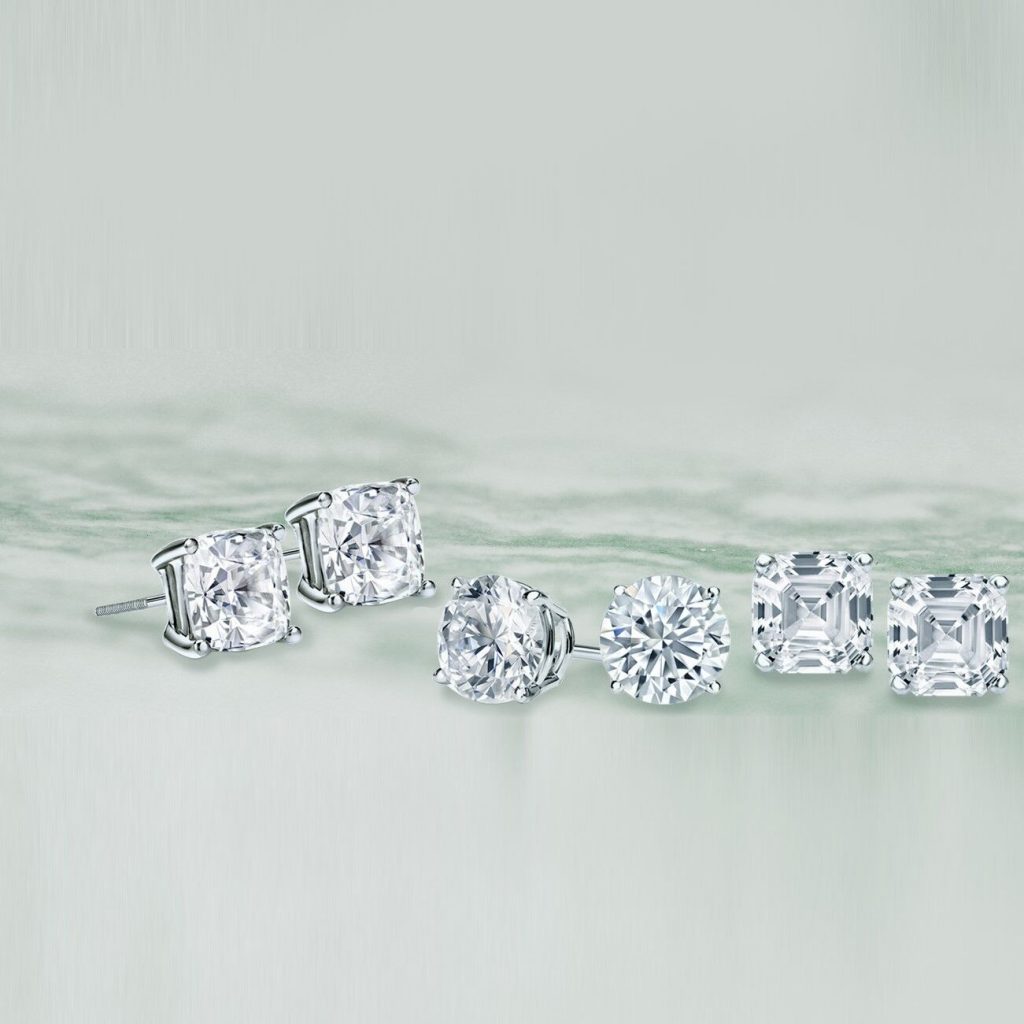
When a gemologist gives a round diamond a cut grade, its symmetry and polish grades factor heavily into their decision. While polish and symmetry aren’t the only factors that affect a diamond’s cut grade, these two qualities can either qualify or disqualify a diamond from getting a certain cut grade. The rules for qualifying for a certain cut grade, according to the GIA, are as follows:
Excellent Cut Grade: Polish and symmetry must be Very Good or Excellent.
Very Good Cut Grade: Both polish and symmetry must be at least Good.
Good Cut Grade: Both polish and symmetry must be at least Fair.
Fair Cut Grade: Both polish and symmetry must be at least Fair.
Poor Cut Grade: Assigned when either polish or symmetry is Poor.
It’s important to note that the GIA only assigns official cut grades for round brilliant cut diamonds. While other diamond grading labs (such as EGL USA and IGI) may give a fancy shaped diamond a cut grade (and retailers may also list their assessment of a fancy shaped diamond’s cut), the GIA does not assess cut on a fancy shaped diamond’s official grading report. Instead, the gemologists at the GIA look only at the symmetry and polish of fancy shaped diamonds. So fancy diamond shapes such as princess cut, asscher cut, cushion cut, marquise cut, emerald cut, radiant cut, trilliant cut, oval shaped, and pear shaped will not have an official cut grade from the GIA, yet will have official symmetry and polish gradings. Therefore, if you are shopping for a GIA certified fancy shaped diamond, be sure to look more closely at its symmetry and polish to assess its cut for yourself.
Want to learn more about diamond cut and why jewelers say it’s the most important of the 4Cs? Browse our Diamond Education Guide.
5. Your Ideal Symmetry and Polish Grades Come Down to Personal Preference
Diamond symmetry and diamond polish can both greatly affect the beauty, quality, and cost of a diamond. But at the end of the day, when you’re shopping for a diamond, know that the only thing that matters about a diamond’s polish and symmetry is that you are happy with it.
If having a diamond (whether it’s for your engagement ring, a fashion diamond ring, stud earrings, or another piece of diamond jewelry) that is totally symmetrical and free of blemishes to the naked eye is important to you, you will likely want to go with symmetry and polish grades of Very Good or higher. Then, if you feel that you would be fine with some minor imperfections or more noticeable imperfections, you can always select a diamond with lower polish or symmetry grades.







 1-855-969-7883
1-855-969-7883 info@diamondstuds.com
info@diamondstuds.com




